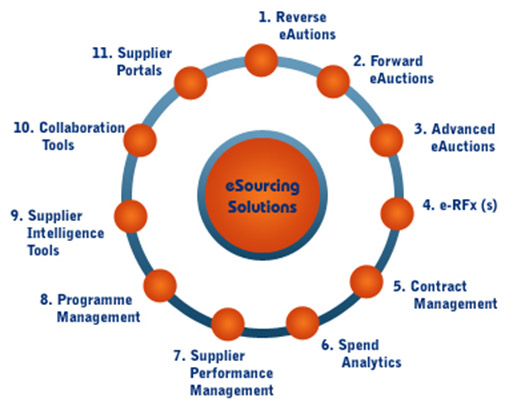Revolutionizing Procurement Practices with E-Procurement in Supply Chain Management
In the era of digital transformation, e-procurement has emerged as a game-changing technology in the realm of supply chain management. Streamlining the procurement process, enhancing efficiency, and fostering transparency, e-procurement has revolutionized the way businesses manage their sourcing and procurement operations. This article delves into the significance of e procurement in supply chain management, highlighting its key benefits and the role it plays in optimizing procurement practices.
Enhanced Efficiency and Time Savings: E-procurement accelerates the procurement cycle, reducing the time and effort required to process purchase orders, manage supplier communications, and track procurement activities. Automated workflows and digital document management systems enable faster decision-making and seamless coordination between stakeholders, leading to improved operational efficiency and significant time savings.

Cost Reduction and Financial Management: By leveraging e procurement in supply chain management, businesses can optimize cost management, negotiate better pricing with suppliers, and identify cost-saving opportunities through real-time data analysis and spend visibility. Streamlined procurement processes and automated financial controls contribute to better financial management and cost containment within the supply chain.
Supplier Relationship Enhancement: Procurement process in supply chain management fosters stronger collaboration and communication between buyers and suppliers, facilitating better supplier relationship management and fostering a collaborative ecosystem. By providing a transparent and standardized platform for interactions, e-procurement strengthens trust, promotes accountability, and encourages long-term partnerships based on mutual benefits and shared objectives.
Data-Driven Insights and Analytics: The procurement process in supply chain management platforms generate valuable data insights and analytics that enable businesses to make informed decisions, identify trends, and assess procurement performance metrics. By leveraging data-driven insights, businesses can optimize their procurement strategies, mitigate risks, and identify opportunities for process improvements and supply chain optimization.
Compliance and Risk Management: E-procurement systems incorporate compliance checks and risk management protocols to ensure that procurement activities adhere to regulatory standards and internal policies. By enforcing compliance measures and risk mitigation strategies, businesses can minimize the potential for fraud, non-compliance, and operational disruptions, fostering a secure and transparent procurement environment.
The Role of E-Procurement in Optimizing Procurement Practices
Centralized Procurement Management: E-procurement centralizes the procurement management process, allowing businesses to consolidate their purchasing activities, standardize procurement practices, and establish a unified platform for managing supplier relationships and transactions. This centralized approach promotes consistency, simplifies decision-making, and facilitates better coordination between various departments and stakeholders involved in the procurement process.
Streamlined Purchase Requisition and Approval Process: E-procurement streamlines the purchase requisition and approval process, enabling employees to submit purchase requests electronically, automate approval workflows, and monitor the status of requisitions in real time. This streamlined process minimizes delays, reduces manual errors, and ensures that procurement requests align with the organization's budgetary and operational requirements.
Electronic Catalog Management and Inventory Control: E-procurement facilitates electronic catalog management and inventory control, enabling businesses to maintain a comprehensive database of products, streamline inventory management, and track stock levels in real time. By implementing effective catalog management and inventory control, businesses can optimize procurement decisions, prevent stockouts, and reduce excess inventory costs.
Automated Procurement Transactions and Invoicing: E-procurement automates procurement transactions and invoicing processes, allowing businesses to generate purchase orders, process invoices, and facilitate electronic payments seamlessly. Automated transactional processes minimize manual errors, expedite payment cycles, and enhance cash flow management, resulting in improved financial visibility and operational efficiency.
Real-Time Reporting and Performance Monitoring: The purchase order management system offer real-time reporting and performance monitoring tools that enable businesses to track procurement activities, assess supplier performance, and measure key performance indicators (KPIs) related to procurement efficiency and cost savings. By leveraging real-time insights and performance data, businesses can identify areas for improvement, implement corrective measures, and optimize their procurement strategies for sustainable growth and operational excellence.
Conclusion
So, purchase order management system has transformed the landscape of supply chain management, revolutionizing procurement practices and driving operational efficiency for businesses across various industries. By embracing e-procurement technologies, businesses can streamline procurement processes, optimize cost management, strengthen supplier relationships, and leverage data-driven insights to make informed decisions and drive sustainable growth within their supply chains. If you need a powerful e-procurement solution, contact us at Procqur.
PROCQUR
Office No:26, 18th Floor, One By Omniyat, Business Bay, Dubai, UAE
971 42432543
Comments
Post a Comment